Introduction to Copper CoatingsThe distinctive colours of copper and copper alloys make them prized for architectural and consumer items and objects of art. Their natural metallic tones range from reddish to silvery. A number of other colours can be obtained by chemical or electrochemical processing. Copper and its alloys are extremely resistant to corrosion, but a superficial discolouring tarnish eventually forms with exposure to the atmosphere or handling. The appearance of these metals can be preserved by applying thin clear protective coatings to their surfaces. These layer coatings are organic chemicals that harden at room temperature or with baking and are usually applied in a solvent. There are hundreds of useful clear copper coating products on the market, formulated from numerous polymers, solvents, and additives. The user selects from these a coating based upon economics, intended life, desired transparency, and the expected service conditions. The effectiveness of a finish also depends on the procedures used when coating. ServiceabilityCoatings are available which can protect copper-base metals for many years under ideal conditions. However, handling, humidity, air pollution, sunlight, and abrasion all work to reduce the life of a coating. For example, copper coating life is usually short in exterior applications in cities with severe air pollution. In selecting a copper coating it must be realised that maximising resistance to one type of service condition may reduce resistance to others. Also, if the life of the article is expected to be longer than any reasonably attainable coating life, a coating that can be stripped off with a solvent must be selected so that the article may be restored when the coating and appearance have degraded to an unacceptable level. Some examples of coating performance on copper metal indicate the range of serviceability of organic finishes and their alloys:
Basic Clear Coating SystemsNitrocelluloseNitrocellulose coatings are the least expensive and most common air-drying coatings for interior service. They are modified with alkyd or acrylic resins. Nitrocellulose coatings are used in exterior applications; however, they are usually stripped and replaced at intervals of less than one year. They do not have high resistance to chemicals, but they are fast drying and easy to use. AcrylicAvailable as air drying or thermosetting, these are relatively high-cost materials. The air drying modifications are popular for exterior applications, while the thermosetting types are useful for interior applications requiring high resistance to heat and abrasion. Since the thermosetting coatings are not conveniently stripped, they are unsuitable for major architectural applications. Epoxy CoatingsEpoxy coatings have excellent resistance to wear and chemicals. They are relatively expensive and are only available in thermosetting or two-part (catalyst activated) compositions with relatively short pot lives. They are good for severe indoor applications, but they degrade rapidly and darken in a few months of exterior service. Silicone CoatingsSilicones provide the best potential for coatings which must operate at elevated temperatures. When the films of these high-cost coatings are used, protection by a second coat of a more durable abrasion resistant lacquer may be necessary. Ultraviolet absorbing compounds are added to prevent darkening of the silicone during exterior exposures. Alkyd CoatingsSlow drying or baking is required when applying the alkyd coatings. Modifications with melamine resins, these coatings are low cost and durable enough for exterior applications. Resistance to chemicals is usually good. Urethane CoatingsColour degradation on exterior exposure has been a problem with urethane coatings. Resistance to chemicals and abrasion are good even for the air drying coatings. Cellulose Acetate ButyrateUsually used for interior applications, cellulose acetate butyrate coatings are air drying and have moderate cost and properties. They have a tendency to darken in exterior applications. VinylVinyls are usually soft and flexible and require stabilization against ultraviolet degradation. AdditivesAmong the common coating additives for copper are the following types:- Ultraviolet AbsorbersUltraviolet absorbers are organic compounds which are sometimes added to coatings for exterior applications in order to prevent darkening and degradation of the coating. In some cases they may also interact with the substrate and prevent tarnishing. Levelling AgentsLevelling improve the flow properties of coatings and thereby provide better surface appearance. In addition, the likelihood of pinholing or other defects is reduced. Chelating AgentsBenzotriazole and other chelating agents interact with copper and its alloys to prevent tarnishing. Chelating agents are preferentially absorbed on the surface of the metals and act as an invisible barrier to elements or compounds which might cause corrosion. In this way they protect the metal… against oxidants permeating through the coating and continue to protect even after a minor defect has been formed in the coating. Chelating agents may be included in the coating formulation or applied as part of a pre-treatment procedure. ApplicationNo coating can perform to expectations if applied to a poorly prepared copper surface. The metal surface must be free of contaminants such as dirt, oil, dust, old finishes and fingerprints. Coating should be done with a minimum of delay after cleaning the metal surface and precautions should be taken to prevent recontamination. Precautions include working in a low dust environment, handling with white gloves, and apply tarnish inhibitors (chelating agents) to the surface. Ordinary steel wool should not be used in cleaning as the pads may contain chemicals that stain copper metals. Suitable abrasives are silicon carbide (Scotch-brite) pads or wheels, stainless steel pads, and powdered pumice stone. The pumice powder is slurried in a 5% oxalic acid solution and rubbed on with a cloth. All residues must be removed and the surface wiped dry with a clean cloth. Abrasives should not be used in polishing prior to coating, parts should be degreased or otherwise cleaned to remove any residue. Degreasing is normally done with solvents such as butyl cellosolve and trichloroethylene. To prevent streaking and staining, it may be necessary to wipe-dry large areas with lint-free wipers. Freshly plated parts must be thoroughly neutralized and rinsed in hot water prior to coatings. The spraying area should be free of dust and dirt and at moderate temperature (between 10 and 33ºC), at low humidity (certainly less than 80% when organic vehicles are used), and well ventilated. Usually enough coats are applied to achieve a total dry layer thickness of 13 to 40 micrometres. Greater thicknesses tend to become obvious and the metal takes on a varnished appearance. However, the coating manufacturer may recommend thinner coatings for certain application. IncralacA system called Incralac developed as a result of research by the International Copper Research Association has given good performance since its release. Intended primarily for use on outdoor architectural metal work, it preserves the natural colours of copper and its alloys for long periods. It can also be used on copper and its alloys indoors. Incralac contains an acrylic ester resin dissolved in a solvent such as toluene. Benzotriazole is added as a corrosion inhibitor, and epoxidized soya bean oil as a levelling agent. Incralac-coated test panels exposed in many cities and towns in Australia have remained untarnished for several years. The inhibitor effectively combats tarnishing beneath lacquer films. This mode of failure is due primarily to peroxides formed during the early stages of degradation of the lacquer film and residual solvent under the influence of ultraviolet radiation. Greatly increased protection is afforded by the incorporation of suitable ultraviolet absorbers, anti-oxidants and copper complexing agents. Careful cleaning and spraying are essential. Wiping with an inhibitor-cleaner (40 grams benzotriazole in a 4.5 litres of water) is recommended as the last cleaning step before the coating is applied. Incralac is available in 500 ml cans and 300g aerosol spray packs from stockists of Wattyl products, or contact Wattyl Australia Pty Ltd at 48 Walker St, Canada Bay, NSW 2046. Phone (02) 9621 9208, or visit http://www.wattyl.com.au/. Additional ConsiderationsA lustrous metallic surface acts as an excellent backdrop to view coating defects and tarnished spots. Therefore the tolerance for defects is low and clear coatings must have a high degree of effectiveness in order to perform satisfactorily. This is less of a problem on antiques or coloured metals. Of concern on copper alloys is that darkening of the substance can occur even under a coating that is intact due to interaction of the copper with residual solvents. This is a special problem during outdoor exposures when ultraviolet radiation can stimulate the breakdown of solvents. By proper choice of solvents and additives this problem can be minimized. Ethyl alcohol and isopropyl alcohol cause considerable tarnishing. Benzene, toluene, xylene, butyl acetate, and ethyl acetate are much better. Discolouration of copper and its alloys also may occur at the curing temperatures normally recommended for thermoset coatings. It is wise to use low curing temperatures and short curing schedules to avoid such in-process discolouration. Catalytic activity of copper sometimes allows lower temperatures or shorter curing schedules to be used. This Product Data Sheet is based on information provided by the Copper Development Association. Further information is available from Austral Wright Metals. |
Finishes – Natural Weathering
 | 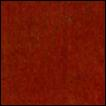 | 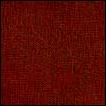 | 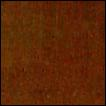 | 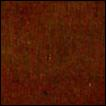 | 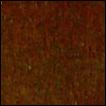 | |||||
Unexposed | 4 Months | 8 Months | 1 year | 2 Years | 3 Years | |||||
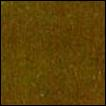 | 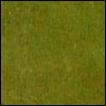 | 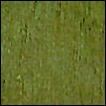 | 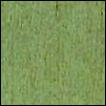 | 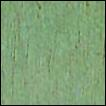 | 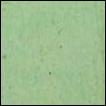 | |||||
4 Years | 5 Years | 7 Years | 10 Years | 15 Years | 25-30 Years |

